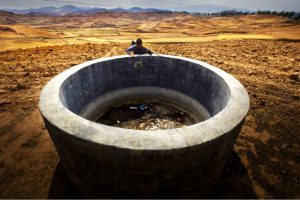Some of China's biggest hydropower dams are left idle, according to an industry insider. In Yunnan province, south-west China, a huge amount of potential energy is being wasted due to a dispute over electricity prices.
The 2GW Ahai dam, in Yulong county, Yunnan, was idle for a year due to delays in hooking it up to the electricity grid. Given the average annual production of the dam, this is equivalent to the loss of 8.9 billion kilowatt hours (kWh).
Many more are facing similar problems; the Liyuan, Longkaikou, Ludila and Guanyinyan dams on the Jinsha, as well as the dams upstream of Miaowei on the Lancang. According to the China Electricity Council, 7GW of hydropower capacity will be idle during the high-water season this year. Replacing that loss would require burning 8.4 million tonnes of coal.
The result of this is that Yunnan is predicted to be in the embarrassing situation of having half of its hydropower capacity idle by 2015.
“You can already see what things have been like these last two or three years,” said one participant in the designing of proposals for electricity transmission. “If you don’t open up routes now, you can imagine how much will be wasted in the next decade or two.”
Yunnan holds on to its power
At the root of the problem is a dispute over how to use the new electricity.
The original plans would have seen Yunnan’s hydroelectricity exported on a “point-to-grid” basis – the power from a particular facility would be transported via the China Southern Power Grid to a particular area. Power from Nuozhadu and Xiluodu was set to be delivered to Guangdong, from the middle reaches of the Jinsha to Guangxi, from Jinping 1 and 2 to southern Jiangsu and from Xiangjiaba to Shanghai, etc.
But that would cut out the provincial grid and, by doing so, remove a layer of taxation payable to the Yunnan government. It would therefore prefer a “grid-to-grid” basis, where power is first fed into the provincial grid before being sold to the regional grid. As one electricity pricing expert explained: “the provincial grid can bump up the price when buying the power from the generators and selling it on to the regional grid, and that profit is taxable.”
The 56 billion yuan [US$9 billion] in spending on the hydropower projects mentioned will provide 9.52 billion yuan [US$1.5 billion] of value-added tax income for Yunnan over ten years. And that does not include the construction taxes, stamp duties, income tax, rental taxes and farmland use taxes during construction, or levies paid for educational and local use after construction.
Who’s to blame?
It could be argued that Yunnan is putting its own interests first. Yunnan’s preferred “grid-to-grid” method would mean more investment and more risk.
“A small amount of power could pass through the Yunnan grid,” explained one insider involved in electricity transmission design, “but large quantities could be a disaster. A single hiccup could bring the whole provincial grid down. It’s like you’re trying to send all the water from the rivers to Shanghai, but first insisting it passes through Dianchi Lake (one of China’s largest freshwater lakes). It’d be a surprise if something didn’t go wrong.”
But others believe Yunnan is right to look after its own interests.
According to an industry insider, the prices for electricity exported from Yunnan were fixed by the National Reform and Development Commission’s pricing department – and are derisory. It would be more profitable to sell the electricity on a grid-to-grid basis.
“It’s like a farmer plants aubergines and the pricing authorities tell him he has to sell them to Zhang San, at 0.5 yuan a jin. But then the market changes and he could sell his aubergines to Li Si or Wang Wu for 0.7 yuan a jin. How come he can only sell them to Zhang San?” One anonymous insider said that the problem was down to “central government authorities interfering in local economic development – what right do they have to tell people they have to sell their electricity to Guangxi?”
Industry-drive in Yunnan
This excess energy has led Yunnan to look for ways to use it themselves. The provincial pricing authorities announced that between June and October this year the provincial grid would buy surplus hydropower at 80% of the usual price for the high-water season.
According to other sources, the provincial government is also trying to encourage the development of new industry, but the prospects are dim. For example, recent plans to develop the power-hungry smelting industry in Yunnan have come up against opposition on environmental grounds.
One anonymous insider said that in the next ten to twenty years the bulk of hydropower development will take place in Yunnan and Sichuan – 100GW in Yunnan alone. “You won’t export it, you can’t use it – waste it then, but it’s a state asset you’re wasting. Corruption and waste are major crimes. Something will have to change.”
This is an edited version of The truth about Yunnan’s power exports and Shocking waste of hydropower in Yunnan – local interests need to change, both published in China Energy News.







